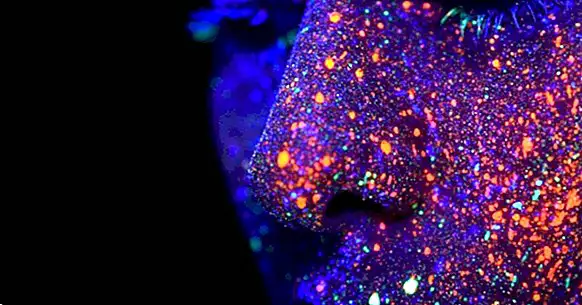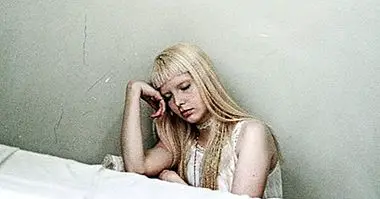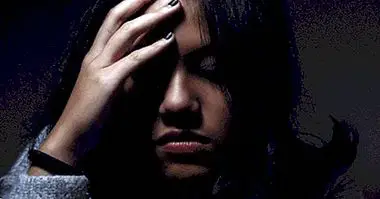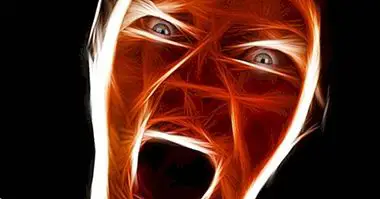Fear of darkness (scotophobia): what it is and how to overcome it
"Fear of the dark" is not only the title of an Iron Maiden song (Fear of Dark), but it is a phobic disorder that can cause great discomfort to the person who suffers it. It is also known as scotophobia, although it is often associated with fear of the night or nytophobia .
In this article we review the main characteristics of this phenomenon and we delve into its causes, symptoms and treatment.
What is the irrational fear of darkness
Scotophobia is the irrational and extreme fear of darkness. As a phobia, belongs to the group of anxiety disorders, and its main symptoms are extreme anxiety and irrational fear of phobic stimulation . It involves avoiding situations and places where there is darkness, and the person can experience the discomfort just thinking about it. Dark spaces without light are situations that can create a certain level of alertness or activation in the person, but not necessarily create terror. Some people suffer from panic attacks in this context, so they tend to avoid any situation like this.
It is common to see children afraid of the dark, in large part because of the images that can be seen in the movies, because in the night and in the darkness they usually manifest ghosts or monsters in fantasy stories. However, in the case of adults, this fear is not as frequent, and when it occurs, it must be treated by a specialist .
This pathology can have a great impact on the daily life of the person who suffers it, mainly because the individual tends to be depressed, anxious or very nervous all the time. Every day of our lives darkens, so the discomfort manifests itself again and again. Those affected often refuse to leave their home when it gets dark or they are not able to sleep alone despite their age if they suffer from scotophobia.
What causes this phobia
The main cause of this phobia is irrational beliefs about the dark, and as I said, fueled by fantasy stories that often appear in books or movies, but also by popular beliefs.
But nevertheless, Most phobias tend to develop due to a traumatic experience in childhood , and occurs by a type of associative learning called classical conditioning. This type of conditioning was studied for the first time by the American psychologist John Watson, who managed to get a little boy, named Albert, to learn to be afraid of a white rat that he used to adore.
You can visualize this experiment in the video shown below:
Phobias, in addition, can be developed for other reasons. One of them is by vicar conditioning, which is a type of learning by observation. We explain it to you in our article: "Vicar conditioning: how does this type of learning work?".
Some authors also affirm that people are biologically predisposed to suffer this type of fear, because this emotion has an adaptive function that has allowed the human species to have survived the passage of centuries. For this reason, irrational fear is complex and sometimes difficult to overcome, because it does not respond to logical arguments. It is a primitive and non-cognitive association.
Symptoms of scotophobia
This phobia causes a series of symptoms that can be cognitive, behavioral or physical and physiological.
Cognitive symptoms include fear, anguish, anxiety, confusion, irrational beliefs or lack of attention . Regarding the behavioral symptoms, the person tends to avoid the phobic stimulus in an attempt to reduce the discomfort.
Between the physical and physiological symptoms they emphasize:
- Dry mouth
- Muscle tension
- Extreme sweating
- Increased breathing
- Suffocation
- Shortness of breath
- Lack of hunger
- Stomachache
- Headache
Treatment
Despite being disabling and creating great discomfort, this phobia has a cure. Psychologists deal with irrational fears daily and, according to research, psychological therapy has a high degree of effectiveness in the treatment of these anxiety disorders .
There are different therapeutic schools and different methodologies to deal with psychological problems, but to treat phobias, cognitive behavioral therapy, which uses both cognitive therapy and behavioral therapy techniques, is very successful.
Relaxation techniques and exposure techniques are some of the most used for this type of disorders. However, the technique par excellence, which is more effective, is the systematic desensitization.
This technique combines the techniques of relaxation and exposure, and helps the patient to gradually expose himself to the phobic stimulus while learning tools to deal in the best possible way with the situations he fears.
Other treatments
However, there are other forms of treatment that are used and with great results: hypnosis, cognitive therapy based on Mindfulness or acceptance therapy and commitment are some examples. These last two belong to what is known as third generation therapies, which emphasize the relationship that the patient has with their problem, context and acceptance.
Drug treatment is also used, but only in severe cases , and always in combination with psychological therapy to ensure that the results are maintained in the long term.
Apps to treat phobias
The irruption of new technologies in recent decades has also affected the treatment of phobias . In fact, virtual reality and augmented reality are ideal for the patient to be exposed to phobic stimulation without the need to have it in front. In addition, the exhibition is carried out in a controlled environment.
But the treatment of phobias has even reached smartphones, since there are different applications that are intended to help people overcome their irrational fears.
- You can learn more about these applications in our article: "8 apps to treat phobias and fears from your smartphone"



















